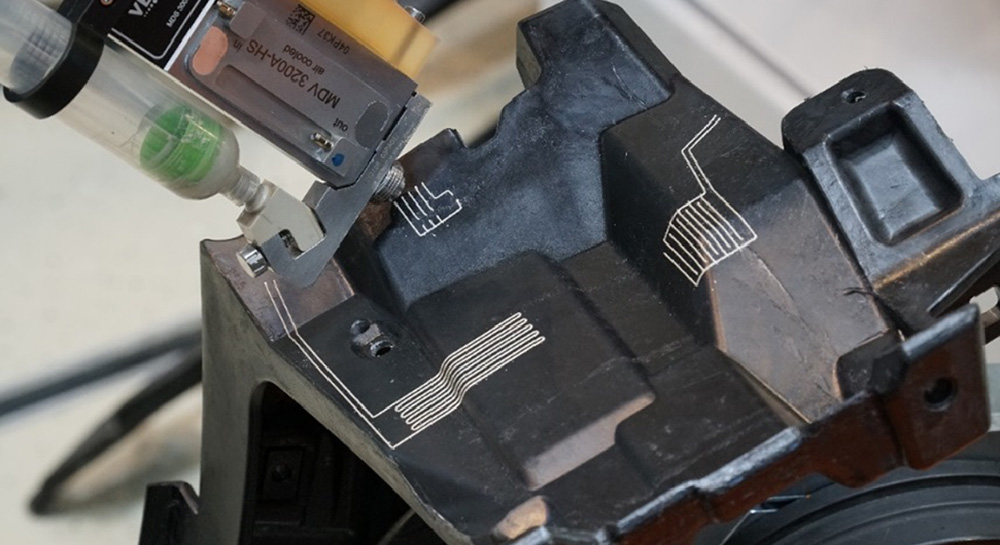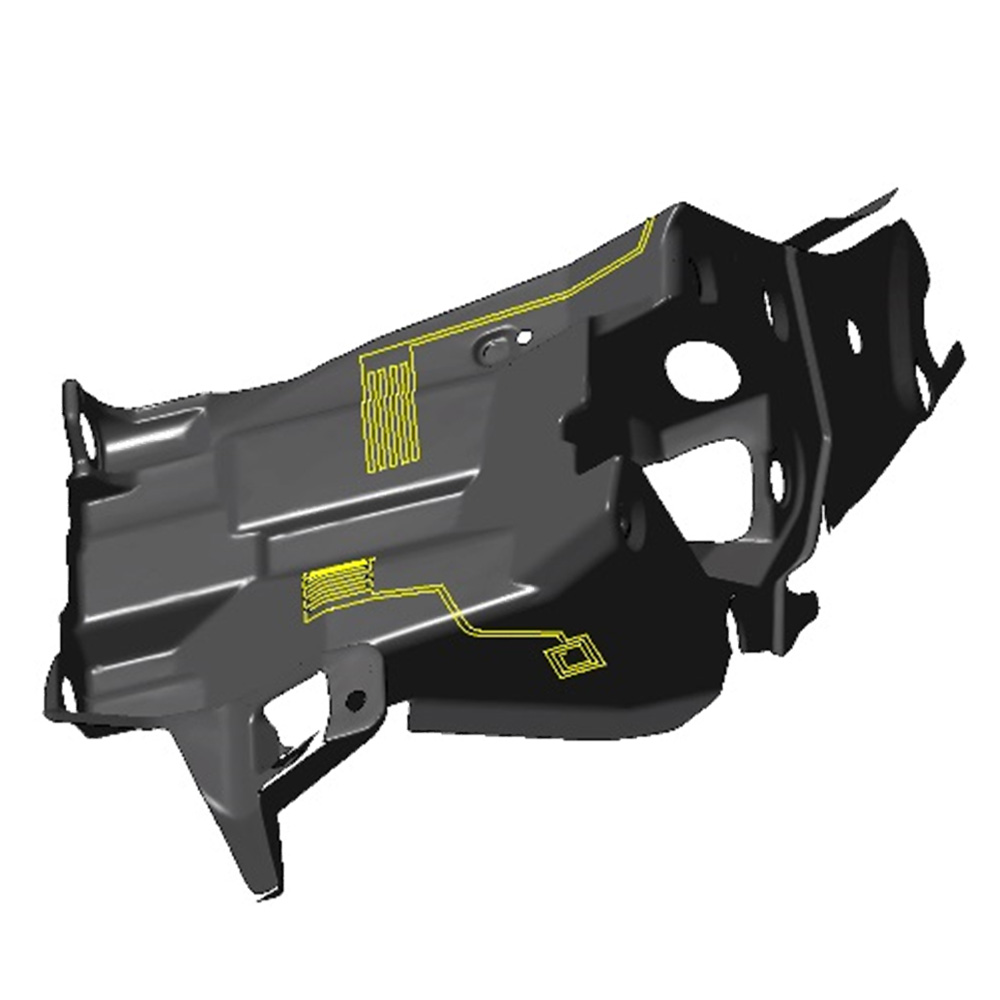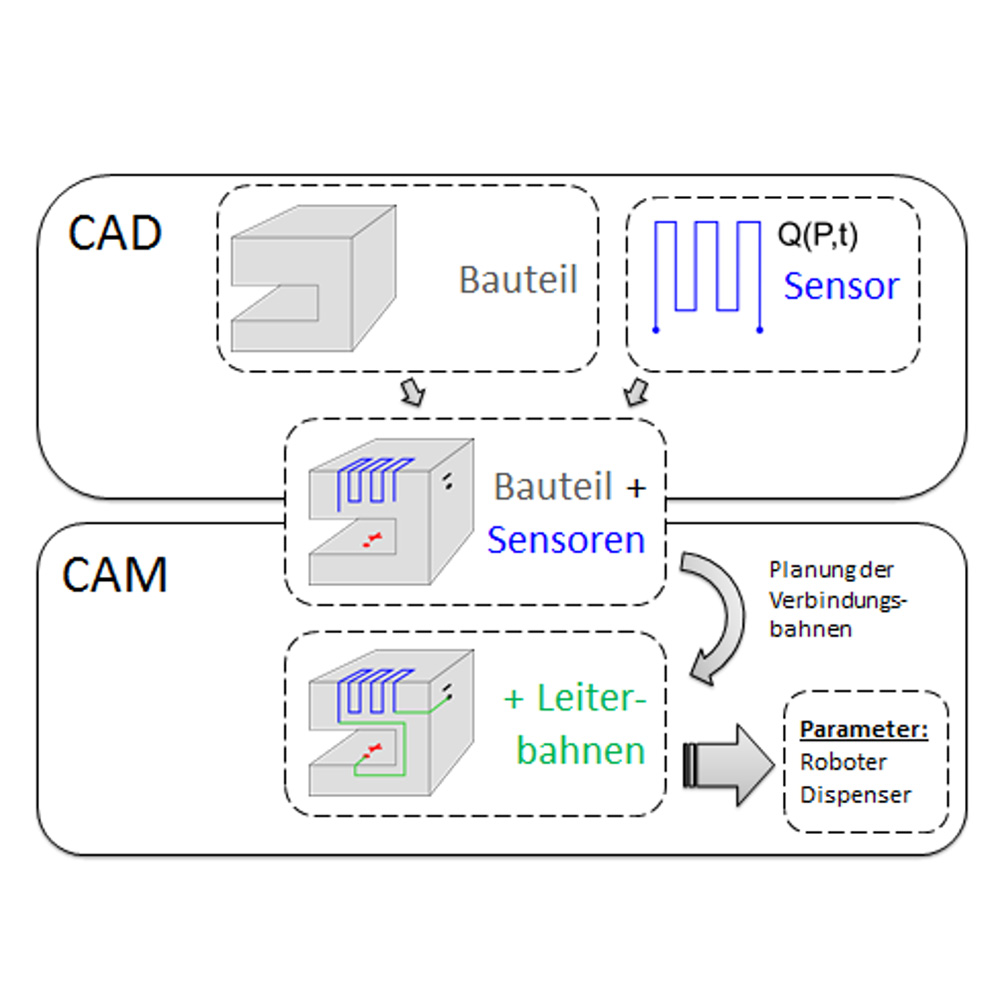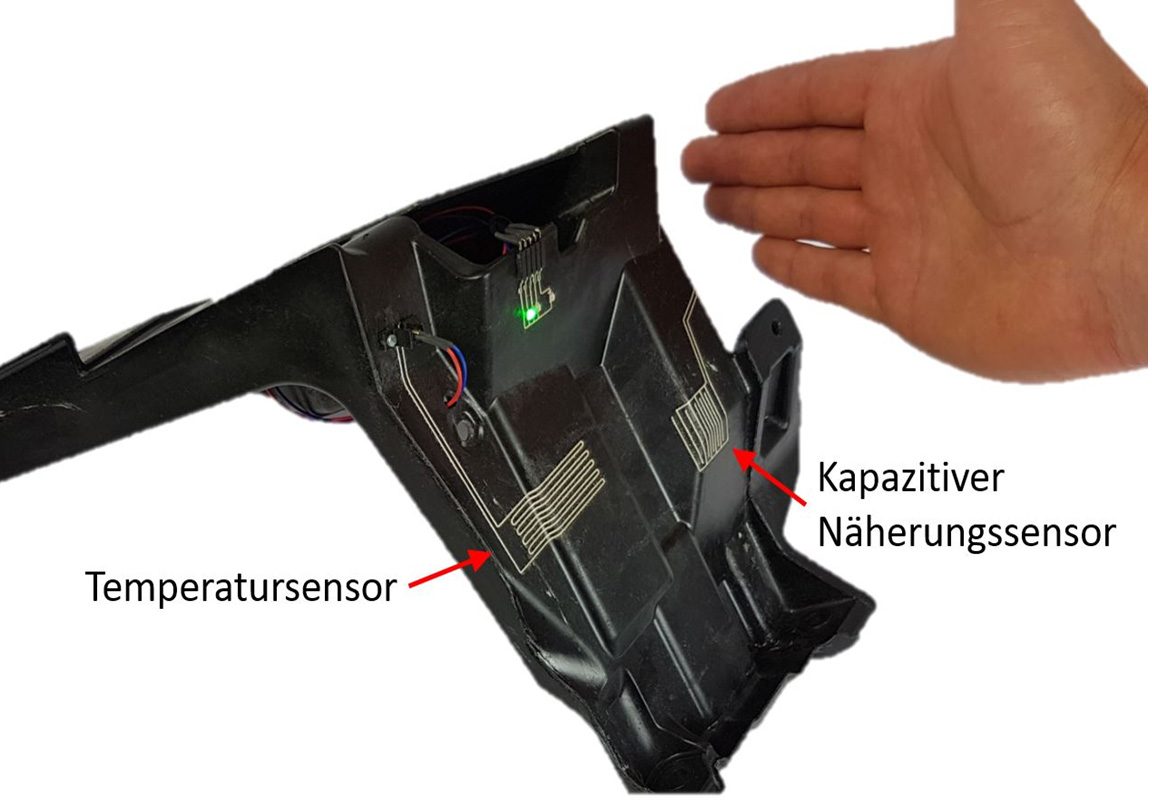
Automotive light carriers with printed sensors and actuators

Challenge
Future production processes must meet the current trends of functional integration and the increasing variety of product variants. To address these challenges, highly flexible and cost-efficient production technologies are required, which simultaneously allow for an increase in the functional density of components.
The production of batch size 1 and prototype construction is particularly cost-intensive, making the development of individual solutions difficult. Additionally, placing functional elements on 3D components is a demanding task that often has to be done manually.
To meet these requirements, innovative approaches and technologies are necessary to enable automated and precise integration of functional elements.
Solution
In the project, a prototype of an automotive light carrier was developed to demonstrate the capabilities of the technology.
The prototype construction involved several crucial steps: CAD modeling was used for the precise design of the components, while sensor design and testing ensured functionality. The manufacturing process design included production using jet-dispense printing technology, post-processing of the printed elements, and contacting the electrical components. Additionally, programming microcontrollers played a significant role in optimizing the interaction and functionality of the prototypes.
 Fraunhofer Institute for Machine Tools and Forming Technology
Fraunhofer Institute for Machine Tools and Forming Technology

